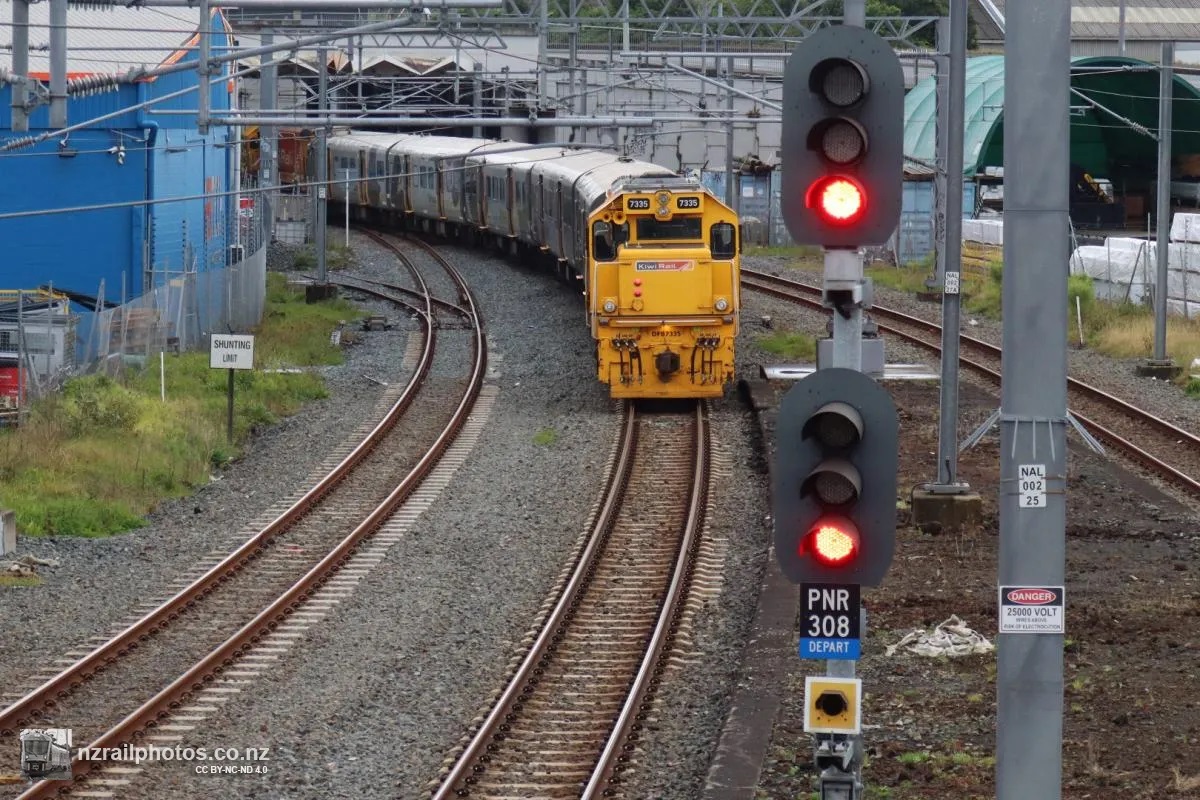
The Transport Accident Investigation Commission (TAIC) has published its final report on the accident involving the Te Huia passenger train near Penrose Station in June 2023.
TAIC’s Chief Investigator of Accidents Naveen Kozhuppakalam says the Commission is calling on the rail sector to address the nationwide need for locomotive engineers to have good route knowledge, for rail vehicles in the Auckland metro area to have a common engineering solution to prevent them passing stop signals, and for all signals to be easy for drivers to see.
The Te Huia regional passenger train left Hamilton for Auckland at about 0735 on 17 June 2023. Its journey was normal until, just out of Penrose Station, it passed a stop signal and entered a set of points where Te Huia’s North Auckland line is joined by the Onehunga branch line. It broke the points because they had been set for another train – an Auckland One Rail commuter train on the Onehunga branch – to enter the North Auckland line.
Te Huia was then stationary on the broken points and vulnerable to impact from the OneRail train because signals were telling that train’s driver it was okay to depart. In the event, signals for the OneRail train reverted to stop when the Te Huia passed the signal at stop entering the junction.
The report shows how three sets of circumstances lined up to make this accident more likely.
“First, Te Huia’s locomotive engineer was unfamiliar with the route and signals around Penrose. Second, there was no effective engineering control to prevent Te Huia passing the signal at stop or to mitigate the consequences of it happening. And third, Te Huia’s locomotive engineer incorrectly interpreted the ‘proceed’ signal for the OneRail train as a proceed signal for Te Huia. The correct signal for Te Huia was at stop but was hard to see.
Mr Kozhuppakalam says the accident factors are symptomatic of larger safety issues.
“Nationwide, safety is compromised if locomotive engineers either don’t know enough about the routes they drive, or infrequency of travel means they become rusty on a route. And the Commission found that KiwiRail’s route knowledge training for locomotive engineers doesn’t adequately identify these gaps in knowledge or currency.
“In the case of Te Huia at Penrose, the LE’s infrequent work on the North Auckland line meant they were unfamiliar with both the route and the signalling system at Penrose.
“Secondly, all rail vehicles operating in the Auckland metro area should have the same engineering solution to prevent them passing stop signals. It’s too complex expecting KiwiRail Te Huia, KiwiRail freight, Auckland One Rail, and track maintenance contractors to each decide on their own system to mitigate risks associated with passing a signal at stop.
“And third, maybe it’s too obvious to say all signals should be easy for drivers to see, but it has to be said. Passengers were at increased risk when Te Huia’s driver continued in response to the wrong signal. It happened because Te Huia’s driver saw another track’s signal and didn’t see the correct signal. And that happened because KiwiRail commissioned it with an incomplete risk assessment.
The Transport Accident Investigation Commission opens an inquiry when it believes the circumstances of an accident or incident have - or are likely to have - significant implications for transport safety, or when the inquiry may allow the Commission to make findings or recommendations to improve transport safety. The Commission's purpose is to improve transport safety by avoiding repeat accidents, rather than by ascribing blame.
